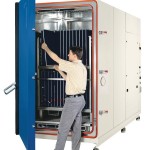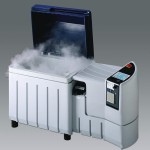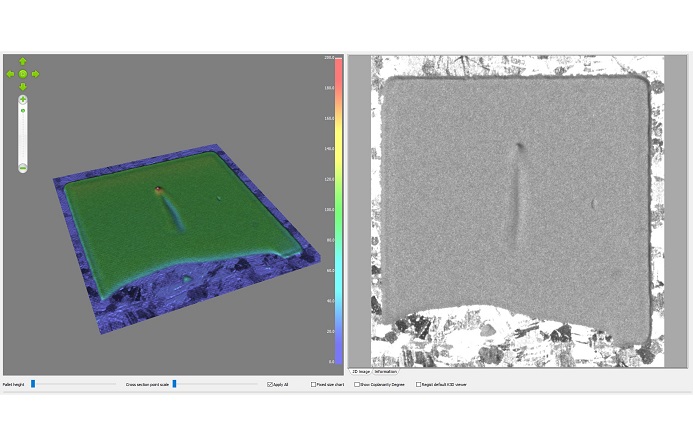The test regulations for design qualification and approval applicable in the European market are specified in DIN EN 61215, 61646 and 62108. The corresponding test regulations for the US market are specified in UL 1703 and have been largely adapted to the DIN EN tests. These tests are mainly: Light/performance tests, electrical tests and temperature and climate tests.
Weiss Umwelttechnik, Reiskirchen-Lindenstruth (Germany)
Although these test methods ensure a certain quality standard, however, they do not provide an overall assessment of the modules as regards to their resistance to environmental influences and their lifetime and performance after having been operated for more than 20 or 25 years.
The test regulations are based on the following environmental parameters:
- Min/Max temperature (-40° C/+85° C) with temperature cycling (approx. 1,40 to max. 1,77 K/min.)
- Climate (+85° C/85 % r.h.) with alterna- ting freezing at –40° C (0,84 to 2 K/min. on average, max. 100 K/min. between +25° C and ±0° C, max. 200 K/min from ±0 to –40° C)
- Constant climate 85° C/85 % r.h. (1000 h) causing a high vapour pressure on the modules.
As only two modules are subject to a certain test sequence the result depends on what test methods have been applied. For Temperature Cycling Tests, DIN EN 62108 allows both a lower temperature range (+65 °C / –40 °C) with the double number of cycles as well as a higher temperature range (+110° C/-40° C) with half the number of cycles.
Due to the high test temperature ageing is faster (according to Arrhenius) and temperature change is faster. This implies considerably shorter test periods (100 cycles of max. 6 h each). As comparison results are not yet available these test results cannot be assigned to natural environmental stress time.
Temperature effect
Temperature and temperature canges cer- tainly have a great influence on the per- formance of PV modules; they play a major role in the ageing of the module layers. Consequently, climate and temperature tests are indispensable for the assessing of the quality of PV modules. The problem, however, is how these parameters can be intensified so that a detailed realistic assessment can be undertaken for environmental stress tests for an appropriate time as regards the ageing behaviour and failure rate. For this purpose, test chambers with sufficient performance are available. However, it must be ensured that the modules are subject to uniform stress, so that neither overstress nor unintended effects will occur.
Reliable conclusions can be drawn from the test results within a considerably shorter period of time by specifically changing the test parameters, as has been practised for high-quality products in the electronics industry (ESS Environmental Stress Screening). Here, different temperature levels (upper and lower temperature value), temperature change rates and number of cycles can be varied.
Much the same is true for the vapour diffusion of the damp heat test (85° C/85 % r.h. corresponds to a water steam pressure 490 mbar). An intensification by factor 1.3 is possible by increasing the vapour pressure (e.g. 90° C/90 % r.h. corresponds to a water steam pressure of approx. 640 mbar).
Combination in addition
Besides temperature influences UV radiation from sunlight is an important factor for ageing of materials. The test specifications designate a pre-ageing with UV light with 15 kWh/m² at +60° C test temperature as pre-treatment for subsequent temperature cycling test (-40° C/+85° C, 50 cycles) and humidity-freeze testing (-40° C/85° C, 85 % r.h. 10 cycles) which is no weathering simulation test cycle but a pre-treatment.
A combination of UV radiation and temperature changes as a certain day/night simulation could be a reasonable supplement. Further components like corrosive gases (with application on agricultural buildings with affection of urea respectively ammonia or industrial urban centre due to air contamination with SO2 and H2S gas) and salt mist (near the coast or on ships) can appear as natural stress.
A test cycle according to EN IEC 60068–2–52 is designated for the corrosion testing with salt spray. It describes a change between salt spray application at +35° C with storage at 40° C/93 % r. h. or 23° C/50 % r.h afterwards. This test can exemplarily be executed on small modules in a salt spray test chamber or with several larger modules in a walk-in salt spray test chamber.
Test application for PV modules
On the basis of test methods for electrical devices EN ISO 6988 the test application with corrosive gas can also be applied for PV modules. At the beginning of this test cycle, after reaching 40° C and approx. 100 % r.h., a single gas dose (acc. to the volume of the test chamber) is injected.
As there is a large water surface on the floor a high amount of gas will be dissolved in the water so the real gas concentration in the air will decrease very fast. After condensation on the specimen there will be a dry phase. If this test is performed with ammonia gas (NH3), it should be considered that a high amount of the gas will be dissolved in the water and not mixed with the air due to its high affinity to water. There is no controlled concentration in the air.
No risk for the operator
Safety measures, such as the electrical locking of the test chamber and automatic ventilation at the end of the test cycle as well as gas monitoring in the laboratory, must be taken so there is no risk for the operator because of the NH3 gas.
References:
IEC 61215 (2005)
IEC 61646 (2009)
IEC 61208 (2007)
IEC 61701 (2010)
ANSI UL 1703
JIS C 8917/8938
JIS C 8990/8991
IEC 60068–2–51 (1996)
Unsere Webinar-Empfehlung
Applikationen aus dem Bereich der Leistungselektronik gewinnen immer mehr an Bedeutung. Die Inspektion dieser Applikation lässt sich mit der bewährten Standardtechnologie der 3D-Messtechnik bewerkstelligen.
Teilen:













